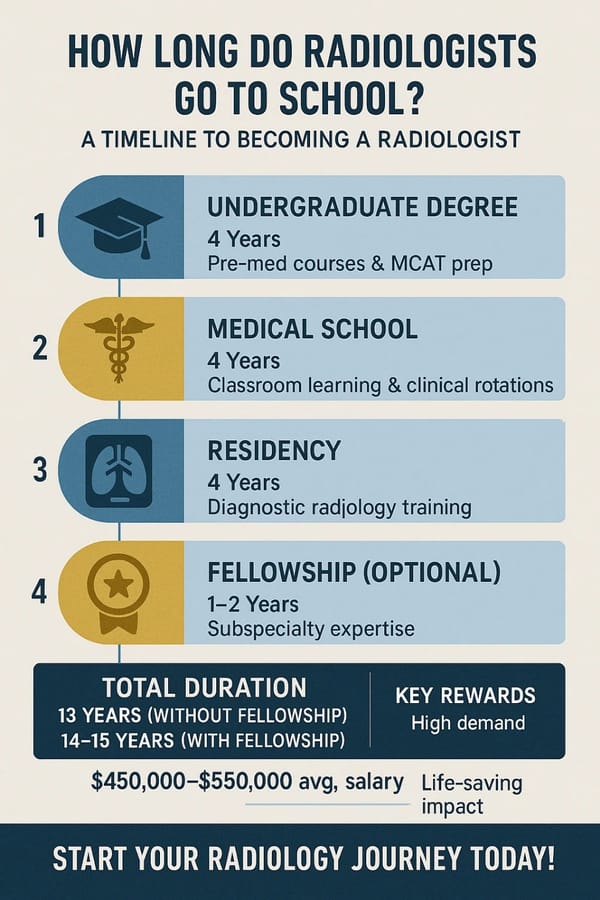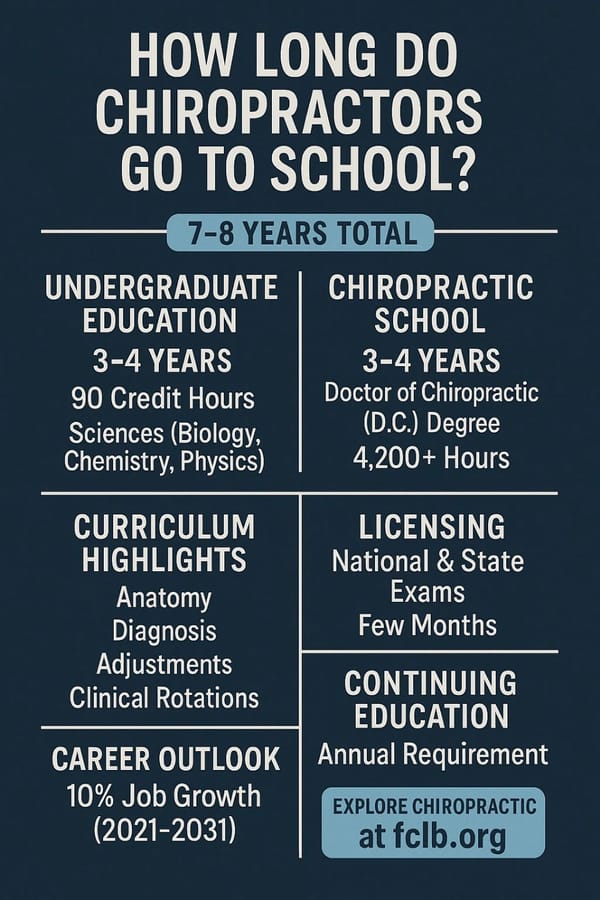Do Orthodontists Go to Medical School? A Deep Dive into Their Training Path
Introduction: Understanding Orthodontists and Their Training
Have you ever thought about the process behind getting that perfect confident smile? Orthodontists are dental specialists who focus on aligning teeth and jaws and stand behind every perfectly straight set of teeth. But do orthodontists go to medical school? According to thorough research, orthodontists do not attend medical school but instead enroll in dental school followed by specialized training. This article targets high school and college students thinking about healthcare professions and explains the educational path orthodontists follow while offering industry professional insights. Throughout our presentation, we will analyze the training procedure and compare it to medical school while showcasing the professional benefits of orthodontics in a professional yet approachable manner.
Orthodontists are vital to dental health because they contribute to both aesthetic improvements and essential functional outcomes. Patients with misaligned teeth frequently experience chewing difficulties along with speech problems and face higher risks of developing gum diseases[1]. Knowledge of their educational requirements enables those interested in dental professions and others with curiosity to recognize the amount of dedication and expertise needed. We will explore the specific functions of an orthodontist as well as the unique educational journey they undertake compared to medical doctors.
What is an Orthodontist? Role and Specialization
Orthodontists are dental specialists who undergo specialized training after dental school to focus on diagnosing and treating dental and facial irregularities. While general dentists are trained to handle a wide range of dental issues—such as cleanings, fillings, and even some cosmetic procedures—orthodontists specialize in aligning teeth and jaws, often using tools like braces, aligners, and other corrective appliances, as noted by Colgate: How To Become An Orthodontist.
The primary distinction between a general dentist and an orthodontist centers on their specialized training focus. General dentists can perform routine dental care, but when it comes to complex cases like severe misalignment, jaw discrepancies, or bite issues, they often refer patients to orthodontists, according to Downey Orthodontist: Do orthodontists go to med school?. Orthodontists who establish private practices need to both treat patients and oversee their business operations, which entails staff recruitment and financial management. Orthodontists work 35–40 hours weekly across four or five days but handle special or emergency appointments outside those hours.
Educational Path to Becoming an Orthodontist
The path to becoming an orthodontist demands prolonged dedication and passion along with a strong commitment to dental health. We can demystify the process by referencing trustworthy organizations such as the Bureau of Labor Statistics and professional dental bodies.
Undergraduate Education
Aspiring orthodontists begin their educational journey by earning a bachelor’s degree, which generally requires four years of study. A specific major is not mandatory, but most future orthodontists choose science-related fields like biology, chemistry, or pre-dentistry for their undergraduate studies. During their undergraduate studies, they must complete prerequisite courses in biology, chemistry, physics, and sometimes biochemistry, as these are essential for dental school admission, as outlined by Colgate: How To Become An Orthodontist.
Dental School
Upon finishing their undergraduate degree, students must take the Dental Admission Test (DAT), which is a standardized exam that evaluates their scientific understanding and perceptual skills. Students who perform well on the DAT while also maintaining a strong undergraduate GPA, paired with strong letters of recommendation and interview performance, can secure dental school admission.
Dental school operates as a four-year educational course that consists of both theoretical classroom teaching and practical clinical experience. Students spend the initial two years of dental school learning basic subjects such as anatomy and physiology along with biochemistry, microbiology, pharmacology, oral anatomy, pathology, and histology through classroom instruction. The final two years of dental school concentrate on clinical practice where students work through different dental specialties to receive supervised patient treatment experience.
Graduates earn a DDS or DMD degree upon completing their dental program. Both degrees are equivalent and allow graduates to practice general dentistry, as noted by LeverageRx: Do Dentists Go To Medical School?.
Orthodontic Residency
Orthodontists need extra specialized training after their initial dental education. Orthodontic residency serves as the specialized training pathway and requires two to three years to complete. Residents undergo advanced orthodontic training, which covers the application of braces, aligners, and various corrective devices. Orthodontic residents acquire knowledge about facial growth patterns along with understanding the biomechanical principles of tooth movement.
Orthodontic residency programs accept only top-tier candidates due to intense competition. All candidates seeking entry into the program must have earned their dental degree and successfully passed the National Board Dental Examination (NBDE). They apply through the Postdoctoral Application Support Service (PASS) and participate in the Postdoctoral Dental Matching Program (MATCH) to secure a spot in a residency program, as detailed by Diamond Braces: How to Become an Orthodontist.
Do Orthodontists Go to Medical School? Clarifying the Path
Now, to answer the main question: Do orthodontists go to medical school? The answer is no. Orthodontists attend dental school, not medical school. While both dentists and medical doctors are considered “doctors,” their training paths are distinct, as confirmed by multiple sources including Indeed.com: Educational Requirements for Becoming an Orthodontist and Inspira Advantage: How to Become an Orthodontist.
Medical school educates physicians with MD or DO degrees to assess and treat various medical conditions that impact the entire human body. Dental school trains professionals who specialize in oral health care, including teeth, gums, and jaws. People often confuse dentists and medical doctors because they both have doctoral qualifications and professional titles of “doctor,” yet their specialized knowledge areas and practice ranges differ. Orthodontists specialize in dental health by correcting teeth and jaw alignment, while medical doctors provide treatment for various general health problems.
Here’s a comparative table to demonstrate the difference between them:
| Aspect | Medical School (MD/DO) | Dental School (DDS/DMD) |
|---|---|---|
| Focus | General health, whole body | Oral health, teeth, gums, jaws |
| Duration After Bachelor’s | 4 years medical school, 3–7 years residency | 4 years dental school, 2–3 years orthodontic residency |
| Specialization | Broad, e.g., cardiology, neurology | Specific, e.g., orthodontics, periodontics |
| Example Role | General practitioner, surgeon | General dentist, orthodontist |
This table, based on information from Bureau of Labor Statistics: Dentists, shows the educational path making orthodontists dental professionals rather than medical doctors.
Why the Confusion? Addressing Common Misconceptions
One reason for the confusion is the use of the title “doctor.” Both medical doctors and dentists earn doctoral degrees, but they are different: Medical doctors receive MD or DO degrees, while dentists obtain DDS or DMD degrees. Additionally, some people might not be aware of the differences between various healthcare professions, as noted by Quora: Why do orthodontists earn the title 'doctor'?.
Orthodontists begin their professional training with general dentistry before they specialize. This broad training might lead some to think that their education is similar to that of medical doctors, but the focus is always on oral health, as clarified by Med School Insiders: So You Want to Be an Orthodontist.
Career Outlook and Salary: Is It Worth It?
A career in orthodontics provides financial benefits and professional fulfillment for those who choose this field. According to the Bureau of Labor Statistics, orthodontists earn an average annual salary of around $208,000, with a projected employment rise of 11.8% within the next decade, especially in rural areas where there is a shortage of healthcare providers, as per Inspira Advantage: How to Become an Orthodontist.
The journey to becoming an orthodontist requires a lengthy and highly competitive educational process. A minimum of 10 years of formal education and training, which encompasses undergraduate coursework as well as dental school and residency programs, is necessary. The American Dental Education Association reports that fifteen applicants compete for each residency opening, which makes the field both challenging and rewarding.
Insights from an Orthodontist: A Personal Perspective
To gain a deeper understanding of what it’s like to be an orthodontist, we can look at the experience of Dr. Sarah Thompson, based on insights from BracesBracesBraces: A Day in the Life of an Orthodontist. Dr. Thompson starts her day early, with her alarm going off at 6:30 a.m. By 7:30 a.m., she drops off her child at daycare and then reaches her workplace at 9:00 a.m. The schedule of Dr. Thompson consists of patient appointments with 50 to 60 individuals, which include orthodontic adjustments and brace placement or removal along with initial consultations.
Dr. Thompson works in close partnership with her orthodontic assistants, who assist with changing wires and prepping brackets as well as cementing appliances and recording patient information. Dr. Thompson performs patient care and dedicates time to treatment planning while tracing cephalograms and reviewing X-rays as well as managing insurance pre-authorizations and interacting with general dentists.
Dr. Thompson enjoys the first patient appointment after braces bonding and the final removal visit the most when asked about her favorite job moments. Her favorite moments arise when she observes her patients’ smiles transform and their confidence levels increase. Dr. Thompson explained during her career reflection that she holds deep affection for her job. She finds positive transformation of her patients’ lives through their new smiles deeply rewarding. Dr. Thompson enjoys her daily work routine because she knows she is enabling people to accomplish what they’ve desired for many years[2].
Conclusion: Making an Informed Decision
Orthodontists receive their education through dental school programs followed by specialized orthodontic training rather than medical school. They play a critical role in addressing dental and facial abnormalities to enhance smile functionality and appearance, according to findings from Harvard School of Dental Medicine: Orthodontics. This path, spanning at least 10 years, equips them with the expertise to transform smiles and improve lives, making it a rewarding choice for those passionate about dental health.
For aspiring orthodontists, the journey is challenging but immensely fulfilling. The competitive nature of residency programs and the extensive training reflect the dedication required, yet the impact on patients’ confidence and well-being makes it worthwhile. Whether you’re a student considering this career or someone curious about orthodontic care, know that every straight smile is backed by years of specialized dental training, not medical school.
Ready to explore this fascinating field further? Visit the American Association of Orthodontists at AAO: Accredited Orthodontic Programs to discover accredited programs and take the first step toward a career in orthodontics today!






